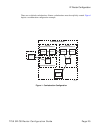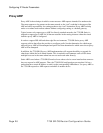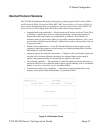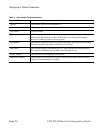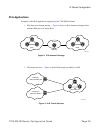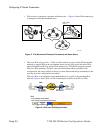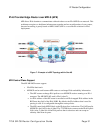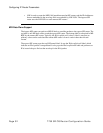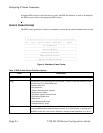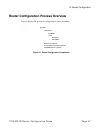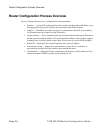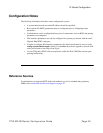
IP Router Configuration
7750 SR OS Router Configuration Guide Page 33
Bidirectional Forwarding Detection
Bidirectional Forwarding Detection (BFD) is a light-weight, low-overhead, short-duration
detection of failures in the path between two systems. If a system stops receiving BFD messages
for a long enough period (based on configuration) it is assumed that a failure along the path has
occurred and the associated protocol or service is notified of the failure.
BFD can provide a mechanism used for liveness detection over any media, at any protocol layer,
with a wide range of detection times and overhead, to avoid a proliferation of different methods.
There are two modes of operation for BFD:
• Asynchronous mode — Uses periodic BFD control messages to test the path between
systems.
• Demand mode — Does not send periodic messages. BFD control messages are only sent
when either system feels it needs to again verify connectivity, in which case, it transmits a
short sequence of BFD messages and then stops.
A path is only declared operational when two-way communications has been established between
both systems.
A separate BFD session is created for each communications path and data protocol in use between
two systems.
In addition to the two operational modes, there is also an echo function defined within draft-ietf-
bfd-base-04.txt, Bidirectional Forwarding Detection, that allows either of the two systems to send
a sequence of BFD echo packets to the other system, which loops them back within that system’s
forwarding plane. If a number of these echo packets are lost then the BFD session is declared
down.
BFD Control Packet
The base BFD specification does not specify the encapsulation type to be used for sending BFD
control packets. Instead it is left to the implementers to use the appropriate encapsulation type for
the medium and network. The encapsulation for BFD over IPv4 and IPv6 networks is specified in
draft-ietf-bfd-v4v6-1hop-04.txt, BFD for IPv4 and IPv6 (Single Hop). This specification requires
that BFD control packets be sent over UDP with a destination port number of 3784 and the source
port number must be within the range 49152 to 65535.
In addition, the TTL of all transmitted BFD packets must have an IP TTL of 255. All BFD packets
received must have an IP TTL of 255 if authentication is not enabled. If authentication is enabled,
the IP TTL should be 255 but can still be processed if it is not (assuming the packet passes the
enabled authentication mechanism).



